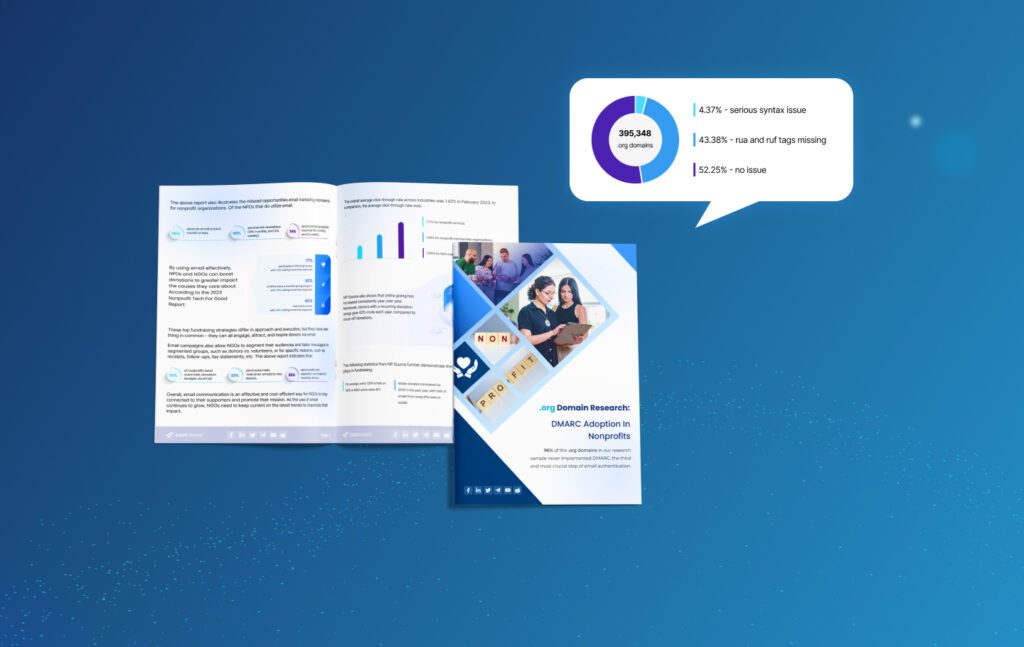Email marketers are constantly looking for ways to improve the visibility of their products and get their messages opened by potential clients. While it’s impossible to entirely influence your client’s decision, Brand Indicators for Messages Identification or BIMI is an email standard that helps your business stand out in your recipient’s inbox.
This article explains what BIMI is and why you should care about it as an email marketer.
What is BIMI?
BIMI allows you to show your brand logo next to marketing emails you send to your recipients’ inboxes. That way, your brand stands out among competitors, and your customers are sure your emails are legitimate.
BIMI is built on the DMARC standard for verifying email. Before you send a mail to your recipient’s inboxes, your email provider verifies it against the sender’s DMARC record within the message to confirm that it’s legit. BIMI is now available for Gmail users with CMCs and other email providers like Yahoo and Fastmail have also implemented BIMI.
Trust
Email marketers need to earn their clients’ trust for the success of their brands, and that’s what BIMI can help you do. Even with the flexibility of choices, customers only support brands they can count on.
Email marketers need to implement BIMI to increase trust and email engagement. By ensuring your brand logo is appended to your message, you’ll stand out from your competitors. Plus, your clients will be more eager to interact with your marketing emails.
Based on the DMA Consumer Email Tracker 2021 report, more than 68% of consumers confirm that brand recognition is the most crucial factor when deciding whether to open an email or not. This shows how implementing Brand Indicators for Messages Identification is vital to your marketing strategy.
Before you launch your next email marketing campaign, use a BIMI record check to validate your BIMI record.
Open Rates
Trust equals increased open rates. It’s an email marketing tool that shows whether your marketing strategy is effective or not. It tells you the percentage of your subscribers who open your emails. If you’re an email marketer struggling to increase campaign open rates, the BIMI record is an excellent addition to your subject line.
In a Yahoo Mail BIMI beta test carried out by Verizon Media Group, email marketers using the Brand Indicators for Messages Identification logo experienced a 10% increase in open rates.
Moreover, a study shows that emails without a brand logo negatively influence consumers’ decisions by 28%. So if you haven’t implemented BIMI in your marketing strategy, now is a great time to do so.
Consumers always try to avoid phishing and other email threats. So they’re naturally cautious and refrain from opening emails from unknown sources. With BIMI, your brand’s legitimacy is reinforced. Prospects are reassured that no harm will come their way when they open your message.
Deliverability
A successful email marketing strategy is based on deliverability rates. Your marketing efforts won’t amount to much if your emails don’t make it to your recipients’ inboxes.
When users constantly delete unread messages from your brand, your sender reputation score declines. This can result in your Internet Service Provider (ISP) sending your mails to the spam folder or even outright rejecting them. One of the factors that improve your sender reputation as an email marketer is your engagement level. But you can’t have one if your customers don’t get your emails.
Because SPF, DKIM, and DMARC must be implemented before you can reinforce the BIMI protocol, the issue of deliverability is addressed earlier in the timeline. So, by aiming for BIMI, you indirectly aim to increase email deliverability.
Improved deliverability also leads to an increased open rate, which results in higher engagement rates.
Brand Awareness
Marketers know that they need to build brand awareness to achieve their business goals. Brand awareness helps your business stay top-of-mind with your clients. When your customers are familiar with your brand, they become comfortable with your products and services. So if they need to decide which brand to buy from, they’re more likely to buy from you.
Displaying your logo next to your email can improve your brand awareness, leading to higher conversion rates and increased sales.
What Comes Before BIMI Implementation?
Brand Indicators for Messages Identification is based on DMARC. So before you can implement BIMI, you need to become DMARC-compliant.
Similarly, DMARC is based on having proper SPF and DKIM records.
So, to make BIMI work, you need first to verify your SPF records, set DKIM straight, and start implementing DMARC. At first, when your DMARC policy is still on “p=none,” you won’t be able to implement BIMI. Once you move to “p=quarantine” and later, to “p=reject,” BIMI will be available for enforcement.
Final Words
The email marketing world is constantly changing. As email-borne attacks become more sophisticated, email marketers are looking for new ways to reinforce their legitimacy.
Hackers always try to impersonate your brand and lure customers into revealing sensitive information. Email marketers must implement authentication protocols like BIMI, SPF, DKIM, and DMARC to ensure trust, better open rates, and improved brand awareness.
Aside from preventing email attacks like spoofing, implementing Brand Indicators for Messages Identification as a part of your email marketing strategy can boost the efficiency of your campaigns, leading to higher conversion rates.


